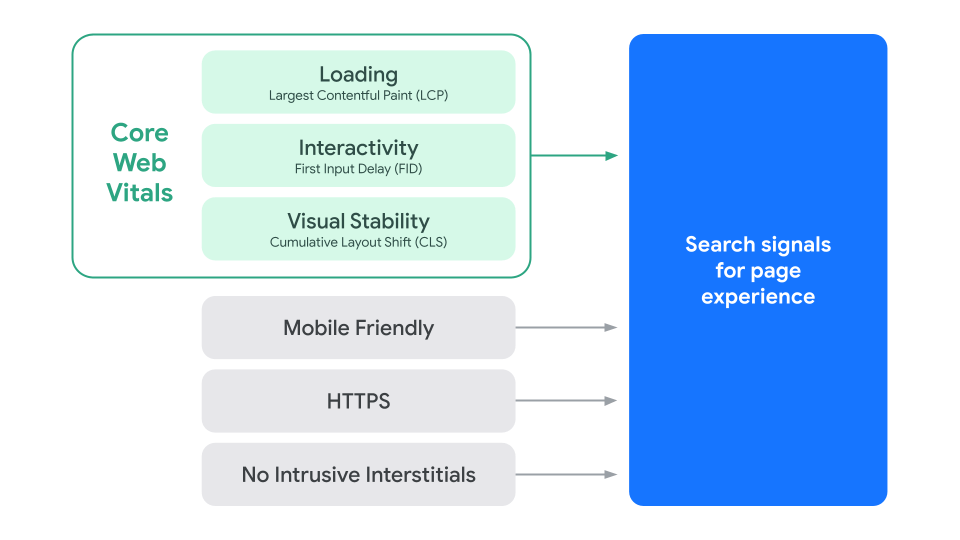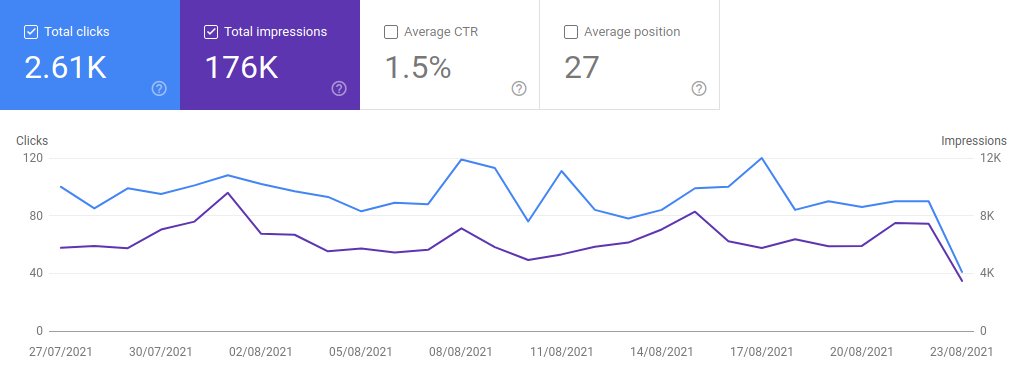Join Fusion’s SEO team as we round up last month’s major industry updates.
Google Updates How Title Tags Are Generated
In late August Google announced that they had “introduced a new system of generating titles for web pages” in a new post within the Search Central blog. The statement came following widespread speculation across the industry, with webmasters and SEOs initially noticing that something had changed around the 17th of August.
According to Google, while title tags could previously alter to match a user query, with the new system this will no longer happen. Instead, webpages will now display the same title tag regardless of the query, in order to produce “titles that work better for documents overall”.
In addition, Google is now making greater use of on-page elements to generate title tags, in particular “text that humans can visually see when they arrive at a web page”. This includes key on-page elements like H1s and other header tags, alongside content that is “large and prominent through the use of style treatments” such as pull-quotes or text within links. The rationale is to avoid instances where manually input HTML title tags are too long, contain boilerplate text, or have obvious instances of keyword stuffing.
Google has made use of on-page elements to produce title tags for years, but early analysis suggests that this is now happening with far greater frequency. One limited case study indicates a 77% drop in HTML title tag usage following the change, although the search engine maintains that the updates are limited and that HTML tags are still used “more than 80% of the time”.
Despite the update, Google says that webmasters should still focus on “creating great HTML title tags”. Google also acknowledge that the new system is still being refined, and are welcoming feedback from webmasters.
Safe Browsing Dropped As Page Experience Signal
Last month Google stated that the Safe Browsing requirement would no longer form part of its Page Experience signal. The announcement came as part of a post on wider changes made to Search Console’s Page Experience report, which also included news on the the removal of the Ad Experience tool.
In the post, Google explain that as issues such as malware or third-party site hijacking are “not always in the control of site users[..]we’re clarifying that Safe Browsing isn’t used as a ranking signal and won’t feature in the Page Experience report”. This means that the signal was not considered within the recent Page Experience update, which completed its rollout on 31st August.
To further make clear the factors which now form part of the Page Experience signal, Google released the updated graphic below:

Safe Browsing issues will still be flagged within other areas of Google Search Console and should of course remain a wider consideration for SEOs and webmasters.
Google Search Console Experiences Data Loss
Google Search Console experienced a widespread data loss issue in late August, resulting in many site owners reporting dramatic drops in clicks and impressions to their websites.

The issue impacts the 23rd and 24th of August, and according to Google was due to an “internal problem”. In a post within the Search Console support hub, Google explain that “Users might see a significant data drop in their performance reports during this period. This does not reflect any drop in clicks or impressions for your site, only missing data in Search Console.”.
Although many initially assumed that the issue was a glitch or reporting delay, this appears to be real data loss, with Google’s John Mueller stating the traffic information is unlikely to be backfilled:
Google Search Console is relied on widely to provide detailed insight into organic performance, and the data loss means that many SEOs may be reporting slightly lower than average levels of traffic for August. Although unfortunate, this is purely an artificial drop, and it’s safe to assume that clicks & impressions for the impacted dates will be slightly higher than GSC reports.
Google Made 4500 Changes To Search In 2020
According to a recent post by Danny Sullivan, in total around 4500 changes to Google Search were made within 2020. These changes likely cover everything from smaller user interface changes to larger algorithm updates, with many unlikely to be noticed by everyday users.
The announcement came within a wider post announcing the launch of an updated How Search Works portal, which is to give insight into how Google approaches “the big, philosophical questions, along with the nitty-gritty details”. Explaining, Sullivan writes:
“On the site, you can find details about how Google’s ranking systems sort through hundreds of billions of web pages and other content in our Search index — looking at factors like meaning, relevance, quality, usability and context — to present the most relevant, useful results in a fraction of a second. And you can learn about how we go about making improvements to Search. (There have been 4,500 such improvements in 2020 alone!)”
Although only a brief comment, with around 3200 changes made in 2019, and 980 reportedly made in 2014 , this indicates that Google is rapidly increasing the rate at which it updates search.
If you found this update useful, check out our latest blog posts for the latest news, and if you’re interested in finding out more about what we can do for your brand, get in touch with the team today.
by Joshua Carter





